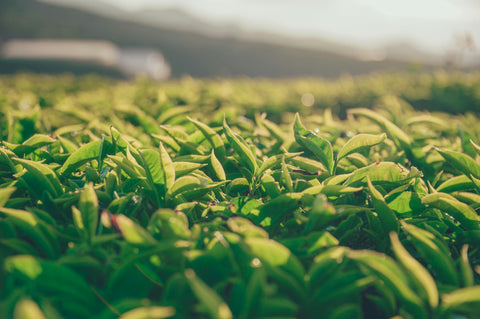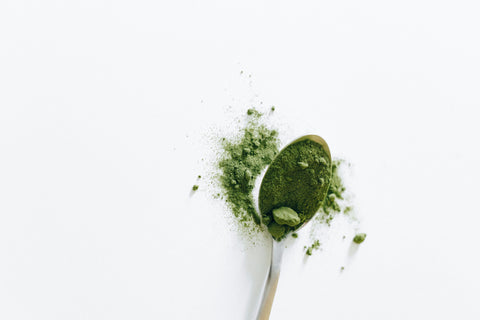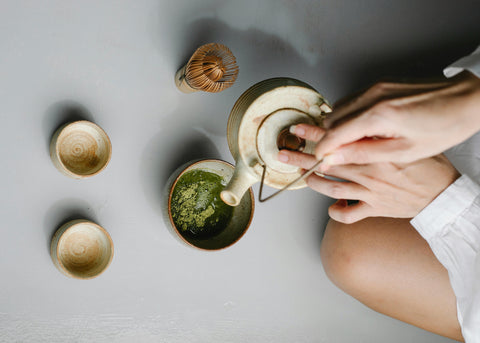
In the world of green tea, two countries often dominate the conversation: Japan and China. While both have rich and enduring tea cultures, the styles of tea they produce — particularly matcha and loose-leaf green teas — differ greatly in how they’re grown, processed, and enjoyed.
This guide explores the core differences between matcha (a powdered tea) and traditional Chinese green tea (usually loose leaf) — helping you better understand which suits your taste, routine, and wellness goals.
Origins and Cultural Context
Matcha has its roots in Zen Buddhist monasteries, where monks used the tea for calm focus during meditation. Today, it remains a central part of the Japanese tea ceremony and is associated with intention, ritual, and mindfulness.
Chinese green tea, in contrast, spans a vast and diverse range of styles — from Longjing (Dragon Well) to Biluochun. Tea in China is an everyday ritual enjoyed with meals or served during hospitality, reflecting a broader, more casual tradition.
While matcha originated and gained prominence in Japan, it is now also cultivated in China — with increasing care given to shading, steaming, and stone grinding to mirror traditional Japanese methods.
The comparison here is between matcha as a powdered form of green tea versus Chinese green tea as a loose-leaf infusion — not between matcha from different countries.
Processing Methods
The core difference lies in how the tea leaves are processed.
Japanese Matcha:
-
Grown in shade for several weeks before harvest (to boost chlorophyll and amino acids)
-
Leaves are steamed to prevent oxidation
-
Stems and veins are removed
-
The leaf material (tencha) is stone-ground into a fine powder
-
The entire leaf is consumed in the drink
Chinese Green Tea:
-
Usually grown under the sun
-
Leaves are pan-fired or roasted after harvest
-
Kept whole or in large pieces
-
Steeped in hot water, then discarded
-
The liquid is consumed, not the leaf itself
Appearance and Texture
Matcha is a vibrant, neon green powder with a silky texture, similar to baby powder. It dissolves in water or milk and creates a creamy, frothy drink.
Chinese green teas range from deep to pale green, depending on the variety. The leaves retain their shape, and the resulting brew is clear and light in body.
Flavor Profile
Japanese Matcha:
-
Umami-rich, creamy, and smooth
-
Slight bitterness with sweet undertones
-
Thick and full-bodied
-
Often described as grounding and complex
Chinese Green Tea:
-
Light, floral, or nutty
-
Refreshing and delicate
-
Clear and clean-tasting
-
Some varieties are grassy or slightly smoky
Nutritional Benefits
Since matcha involves consuming the entire tea leaf, it contains a higher concentration of antioxidants(especially EGCG), caffeine, and nutrients like L-theanine and chlorophyll.
In contrast, steeped Chinese tea contains lower concentrations, although it is still beneficial. It’s gentler on the system and ideal for regular hydration.
|
Category |
Japanese Matcha |
Chinese Green Tea |
|
Processing Method |
Steamed & stone-ground powder |
Pan-fired loose leaf |
|
Appearance |
Bright green powder |
Whole leaves, pale to dark green |
|
Flavor |
Umami, rich, slightly bitter |
Light, floral, nutty, grassy |
|
Caffeine |
Higher |
Lower |
|
Antioxidants |
Very high (EGCG) |
Moderate to high |
|
Preparation |
Whisked into water |
Steeped in water |
Which One Should You Choose?
Choose Japanese Matcha if you:
-
Want a stronger energy boost
-
Enjoy creamy, full-bodied drinks
-
Like preparing lattes or ceremonial tea
-
Want maximum antioxidant content
Choose Chinese Tea if you:
-
Prefer light, delicate flavours
-
Enjoy sipping tea throughout the day
-
Like traditional loose-leaf brewing
-
Want a gentle, calming beverage
At Forest Cloud, we specialise in ceremonial and premium matcha, sourced from farms that prioritise quality and traditional processing — whether from Japan or China.
We acknowledge that China now produces matcha-grade teas using proper shading, steaming, and grinding techniques, and we support transparency in origin and quality, rather than assumptions based solely on geography.
Explore our matcha collection here
Final Thoughts
While both matcha and Chinese green tea originate from the same plant (Camellia sinensis), they offer very different drinking experiences. Matcha is grounding, nutrient-dense, and intense. Chinese green tea is clean, refreshing, and ritualistic in a different way.
Understanding the differences helps you choose what best suits your day — or even incorporate both into different parts of your routine.





